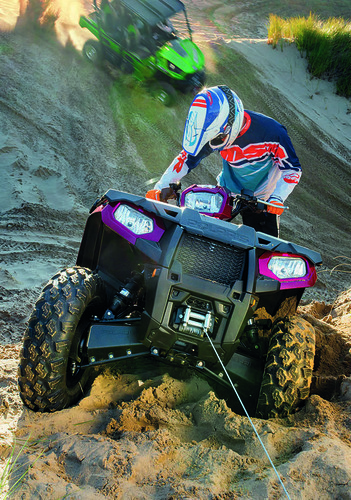When you’re thinking of which aftermarket upgrades to stick on your ATV, is a winch at the top of the list? Hauling, hoisting, and towing are usually tasks reserved for larger machines, like a side-by-side or truck. But what you may not realize is just how much you can accomplish with a winch installed on your favorite four wheeler.
There are lots of reasons why a winch is your best friend if you’re into hunting or camping with your ATV. But the perks aren’t limited to those activities! Let’s take a look at all the ways you can benefit from putting a Black Ops Winch on your quad.
When it comes to getting things done around your property, the possibilities for using a winch are endless. One of the biggest reasons: tension. When pulling out old fence posts or tensioning new fence line, having a winch with a wireless remote can make your job a million times easier.
A winch-equipped four wheeler is a great tool to have when working around the property.You can also decrease your manual labor by using your winch to remove fallen logs or collect large amounts of firewood. Just like we suggested with hunting, you can pull out your winch rope (Black Ops Winches give you 50 feet of rope to work with) and use it to haul heavy loads up hills or over unsteady ground.
Having an ATV with a winch is great for landscaping, too. You can easily use it to rip stumps out of the ground. And if you have a large garden or lots of property to take care of, your four wheeler is perfect for transporting you from plot to plot. Not only will this save you some time, but you’ll save your legs, too.
They might not be as big as side-by-sides, but ATVs can be just as useful on the hunt if you have the right winch installed. If the animal fell somewhere that’s inaccessible, you can use your ATV winch rope to pull it closer, getting it in a better position to transport.
After the hunt, when it’s time to butcher, you can use your winch and an A-frame construction (or just a big, sturdy branch) to hoist the deer. You’ll need a snatch block—chances are you’ve got one in your recovery kit. Just run the winch line through the pulley, secure the pulley in the tree or A-frame, connect the winch hook to your gambrel hook, and use the winch to lift the deer.
We’re willing to bet you’ve taken your ATV camping once or twice, but have you truly taken advantage of the ways a winch can help on those trips? Here’s a life hack for you: pull out your winch line and hook it to a nearby branch to make a clothesline! You’ll never know when you need to dry out wet clothes or gear.
And we’re hoping you came prepared with a tent, but if something happens to it or you end up having to seek shelter at the last minute, use the same winch-on-a-tree trick and throw a tarp over it. Voila! You’ve got yourself a quick, impromptu, (very) rugged emergency shelter.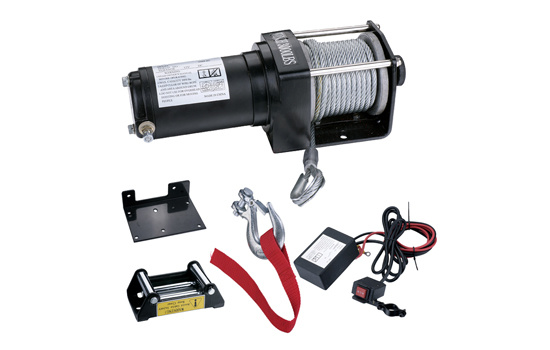 Hope you don’t mind roughing it for a night or two!
Hope you don’t mind roughing it for a night or two!
Why break your back shoveling snow by hand when you can let your ATV do the work for you? With a Winch-Operated Snow Plow System from SuperATV, clearing your driveway (and your neighbor’s, and your grandma’s) is quick and painless. This is an extra special lifesaver if you have a really long driveway or if you live in an area where the city’s snow plows rarely visit.
Save your back this winter by investing in a winch-operated snow plow for your quad. It makes for a fast, easy, and kind of fun way to keep your driveway clear so that wintertime travel is a breeze.
We’ll end this list with the most obvious reason why you’d want to have a winch at your disposal at all times.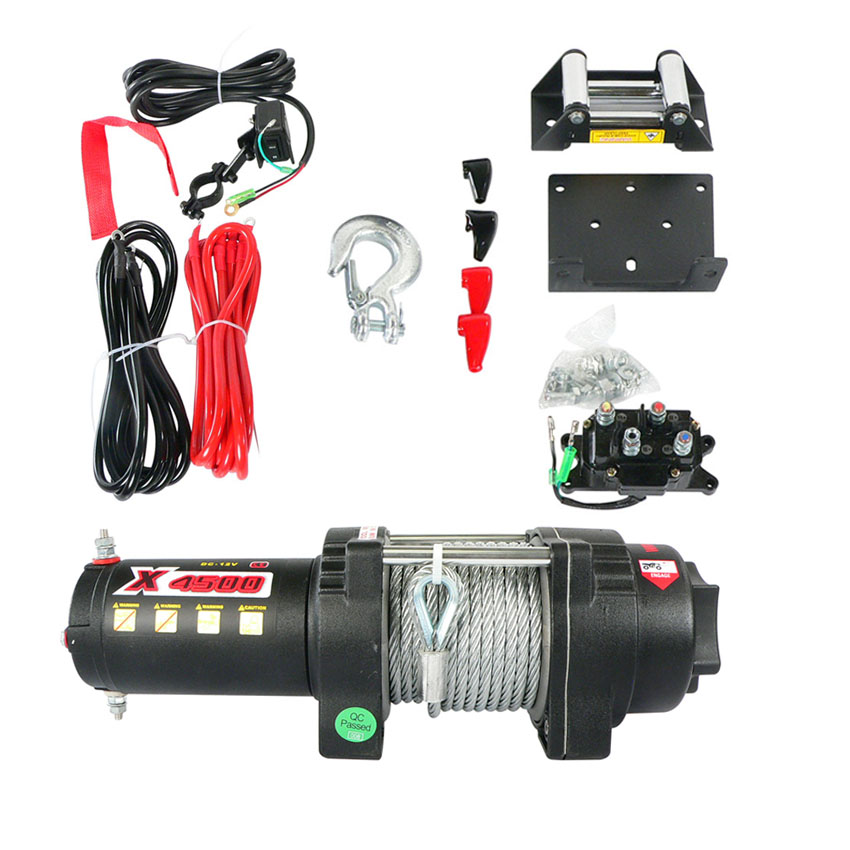 Inevitably, you or someone you know is going to get stuck. And when that happens and a winch is your only way out, you’ll be glad you invested in one.
Inevitably, you or someone you know is going to get stuck. And when that happens and a winch is your only way out, you’ll be glad you invested in one.
So the next time you start to think that a winch would be better suited for a side-by-side or truck, think again! With the right equipment, even smaller ATVs can prove to be the biggest workhorses.
And when we recommend always having a winch installed on your four wheeler, we don’t just mean any winch. We’re talking about SuperATV’s waterproof Black Ops Winches. They utilize flexible and rust-proof synthetic rope and are made to pull 2,500, 3,500, 4,500, or 6,000 pounds, making them the best ATV winch you can get. We’ve also got plenty of winch accessories for you to choose from, including mounting plates and rocker switches. When it comes to equipping your ATV to be the ultimate one-seater workhorse, SuperATV has got you covered.
Now head down to the comments and tell us what we missed! What odd jobs or random uses have you found for your ATV winch?
Winches can be dangerous when misused or used without proper safety precautions. From where you stand when a winch is under load to what not to do with your rope or winch cable, there are many important factors to consider when setting up and using your winch. Of course, there are many things you can do right or wrong, and we are going to show you some of the ways you can use your winch correctly. Our goal is that with our experience and advice, you can use your winch safely and adequately.
Warn is a manufacturer that no longer needs presentation. It offers a wide variety of winches but also several accessories to facilitate their use.
Wear gloves at all times. Almost every winch manufacturer will sell you sturdy leather gloves that will help protect your hands when using your winch. However, suitable work gloves will do the trick. You should get into the habit of grasping the hook strap rather than the hook to keep you safe when you reach the critical point in the last moments of the rewinding. We also recommend keeping a distance of more than an arm’s length between your hands and the winch while it winds into the roller guide.
You should get into the habit of grasping the hook strap rather than the hook to keep you safe when you reach the critical point in the last moments of the rewinding. We also recommend keeping a distance of more than an arm’s length between your hands and the winch while it winds into the roller guide.
You should never grab a winch cable with your bare hands. Thorns and other debris can dig into the synthetic rope, and steel cables can fray, causing severe injury to your hand. Your fingers can also be pinched between the line and guides. The results can be serious and very painful. You could lose a finger or even your hand if it gets stuck in the winch. A broken wire on a steel cable can open your hand like a sharp razor, thus requiring several stitches.
Some winching accidents are simply caused by ignorance. A winch cable or rope must be wound with a certain tension for proper winding. Just release the winch drum brake and fully unwind the cable. Then all you have to do is proceed with its mechanical rewinding by applying adequate tension to evenly and adequately position the line on the drum.
Otherwise, it could damage the cable and the winch. The winch could be unusable in a worst-case scenario because the rope or steel cable would not come loose from the drum. The cable and rope should also be rewound periodically (under load) to ensure appropriately stacked.
Safe winching method:When your vehicle is in a bad situation, release the drum brake of your winch and go to the anchor point that you have previously determined by pulling your cable by the hook strap (if you have one) or by the hook.
It is not necessary to fully unwind the winch cable. However, there may be occasions when your winch cable is not long enough. In a case like this, a Spydura Warn extension is a time-saving alternative time that will allow you to reach a more distant anchor point.
Never wrap your winch cable around a tree. Whether synthetic or steel, the winch cable will damage the tree, killing it in the process. Doing this would have a tightening effect when pulling, which would damage the tree. It also might be so tight that you won’t be able to pull it off. Remember that one of the reasons you are on the trail is to enjoy nature and not destroy it.
It also might be so tight that you won’t be able to pull it off. Remember that one of the reasons you are on the trail is to enjoy nature and not destroy it.
The correct way to use a tree as an anchor point is to select a large tree and use a wide WARN tree guard strap around the tree’s base. Note how the WARN D-ring shackle goes through both ends of the strap and hooks onto the winch line. D-ring shackles are designed to hold a 90-degree load. You need to position it so that the thickness of the cross-section of the shackle and pin can withstand the shear load. Do not over tighten the shackle bolt and allow 1/4 turn free of its final stroke to facilitate loosening.
A tree is stronger closer to the ground. You also don’t want the strap to slip off the tree, so if it has an inclined angle toward your winching line, look for another tree. Winching several feet above the base of the tree could create enormous leverage on the tree’s roots. In an extreme case, the tree could be uprooted, killing it and possibly causing you severe injury if it accidentally falls on you. There are times when you might want a raised anchor point, but this tree is not the one to use for that.
There are times when you might want a raised anchor point, but this tree is not the one to use for that.
In exceptional situations, like on a mountainside, you will have to use a higher anchor point to avoid your cable rubbing on abrasive and sharp surfaces such as rocks.
When adequately secured your cable, shackle, and strap, return to your machine to engage the drum clutch. Start your vehicle, put it in neutral, and turn off all accessories. If you have the possibility of having a remote control for your winch, use it to proceed with the winding of the cable, ensuring that it winds properly until a small tension. Then stop the process.
Use a specially designed WARN winch damper or a heavy blanket that you install on the cable midway between the winch and the anchor point. It is a great way to reduce the risk of injury if a steel cable breaks. The weight of the damper will pull the line down if it breaks, making it hit the ground rather than people. This technique also absorbs the energy stored in the cable. However, you will have to reposition the damper at the 1/2 portion of the cable during the winching operation.
However, you will have to reposition the damper at the 1/2 portion of the cable during the winching operation.
Plan ahead. Standing near a loaded winch cable is dangerous. Never straddle a winch line (for obvious reasons), and when winching, avoid standing between the vehicle and its anchor point. Anyone not involved in the winching operations should stand behind a vehicle, rock, or tree and keep a safe distance from the cable.
Resume winching at intervals, as small breaks will allow your vehicle’s battery to recharge and will at the same time prevent your winch from overheating. Remember that this is not a race against time, and you need to take all the necessary time to complete the winching. You can also provide additional assistance by slowly driving the winched vehicle while pulling and keeping constant cable tension.
When your vehicle is out of its precarious situation, put the transmission to Park and apply the handbrake first, then release the tension on the cable.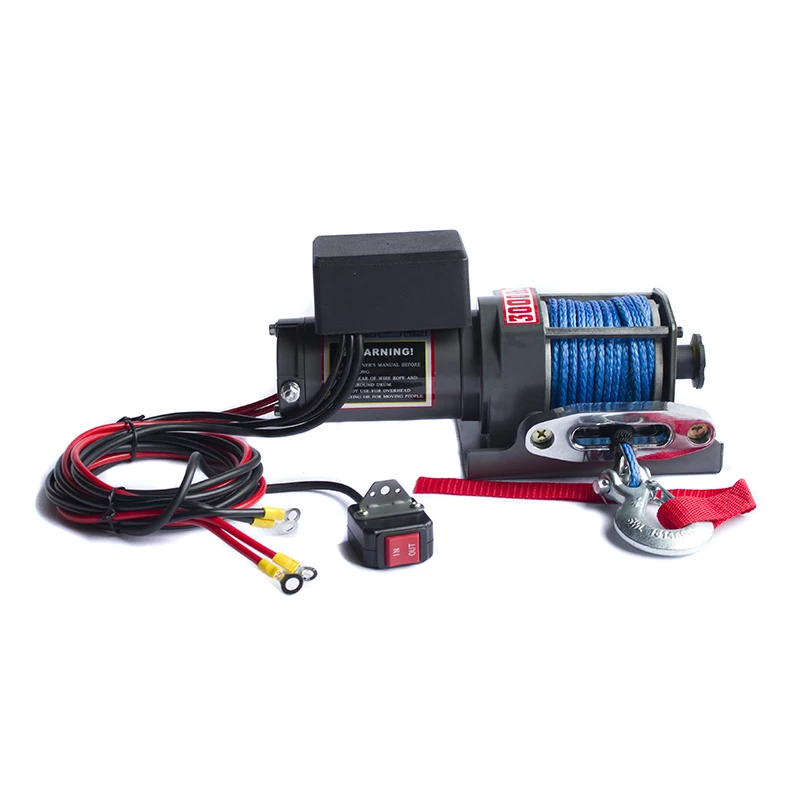 You can now remove the accessories that have been useful for your winching, and you will be ready to go back to the adventure.
You can now remove the accessories that have been useful for your winching, and you will be ready to go back to the adventure.
A snatch block is a sturdy pulley inside a metal case. It is primarily designed for handling heavy loads, functioning as a pulley point that can redirect the pulling direction of a winch line. Note that it is also possible to double the pulling capacity of a winch.
Snatch blocks are used to increase the lifting or pulling capacity of winches. It is common for this method to produce a 100% increase in pulling or lifting capacity. However, beware of the extra force this has on the attachment / anchor points.
Snatch blocks also allow you to change the direction of a winch cable by shifting the anchor point, allowing you to pull in a three-point motion. Robust and durable, snatch blocks are ideal for transferring loads over short distances and are commonly used in recovery situations.
When used in conjunction with a winch, the snatch block can significantly increase the winch’s capacity, allowing for a smoother and easier winching process.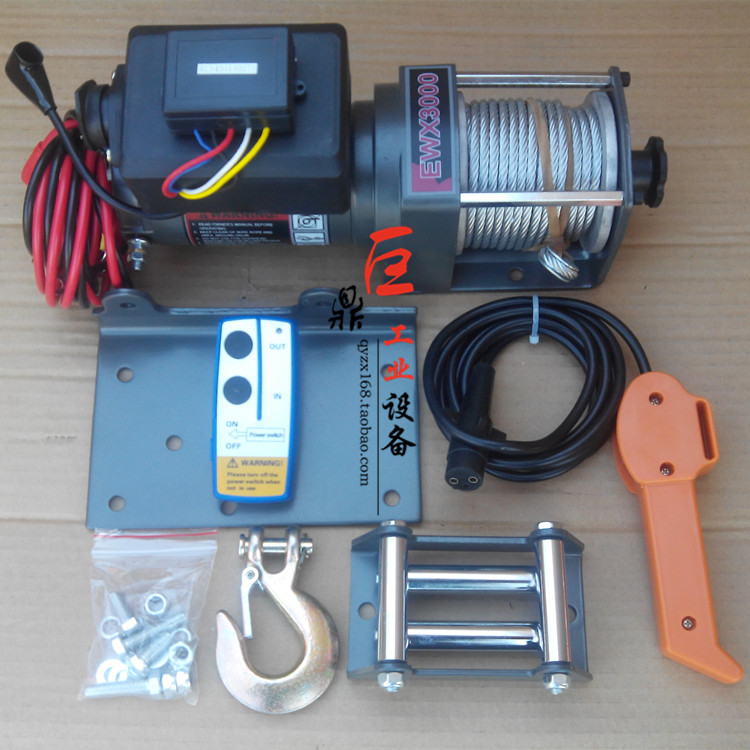
What we have presented are simple ground rules for safe winching. Remember that every situation, while it may seem similar to others, requires a period of reflection on its proper course of action. It is not a task to be taken lightly, and your constant focus on safety is required. Finally, you will agree that the right equipment will make a big difference in the success of this delicate operation.
A winch is a must have for off-road riding. It allows you to pull a stuck ATV out of mud, water or deep ruts. Many models of CFMOTO ATVs and ATVs have a winch from the factory, for others it needs to be purchased separately. In this article, we will tell you how the winch works, what to look for when choosing, and also give useful tips on how to use it.
ATV winch is a drum with a cable. An electric motor is located on one side of the drum, and a gearbox on the other. Rotation from the electric motor to the gearbox transmits a shaft that passes inside the drum.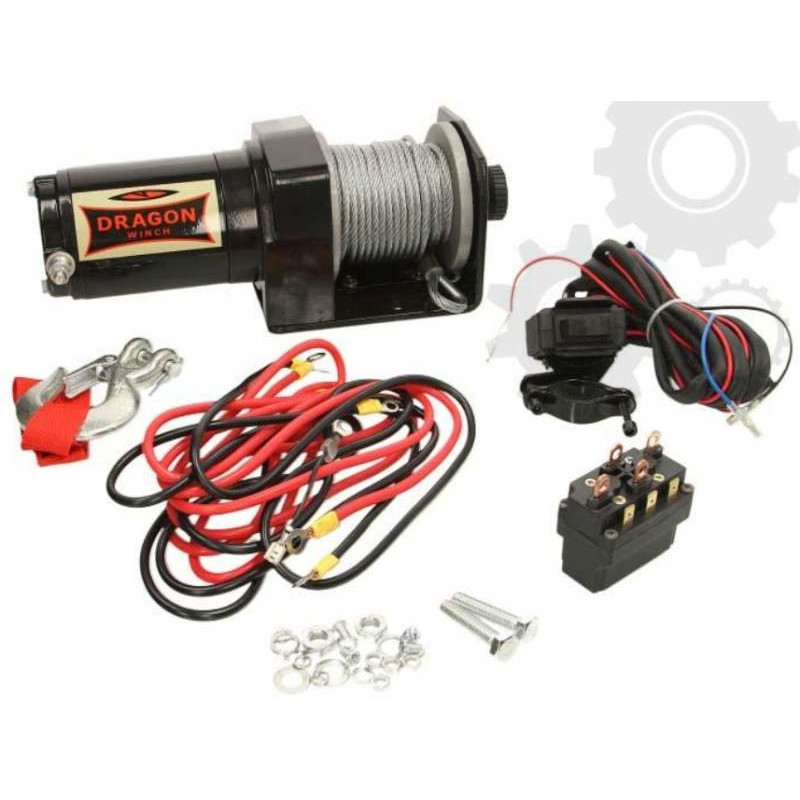 The gears of the planetary mechanism are located in the gearbox.
The gears of the planetary mechanism are located in the gearbox.
Reducer reduces speed and increases traction. The rotation from the gearbox is transmitted to the drum, which winds the cable, creating traction and gradually pulling out the stuck equipment.
One of the key parameters to consider when choosing a winch is traction. It determines the maximum weight of the load that can be torn off the surface. With each skein of the drum, the winch force decreases.
Thrust is measured in pounds (labeled on winches as lbs), 1 lb = 0.45 kg. The force depends on a number of features: the diameter of the drum, the number of wound turns, the power of the electric motor, as well as the gear ratio of the gearbox.
It is not always necessary to choose the most powerful and fastest winch: the more powerful the mechanism, the more difficult it is to handle. Beginners can harm equipment and even their health - it is not uncommon for a broken cable or a broken hook to cause injury.
Matches the cubic capacity of the ATV:
Steel - cheap and easy. Requires work with gloves, not repairable. May cause injury if mishandled.
Synthetic - requires maintenance but is easy to use. It does not "shoot", and if the cable is damaged or torn, it can be braided on the spot.
Most experts believe that material choice should be based on personal preference: some riders lean towards steel over time, others towards synthetics.
The winch is installed on a special platform on the ATV frame. If there is no platform, you need to buy it and install it according to the instructions. The site has standard anchor points that fit classic winches up to 3,500 feet of pull.
The site has standard anchor points that fit classic winches up to 3,500 feet of pull.
When choosing a winch, pay attention to the width of the drum:
With certain skills, you can modify the fasteners and install almost any winch - the main thing is not to make the fasteners “to break” and not to strengthen weak points. If the ATV is under warranty, it is advisable not to touch the frame and buy a regular winch.
Installing the winch is easy, but the connection will have to be tricky. To lay the wiring, it is advisable to remove the plastic from the ATV. The winch must be connected to the control unit and battery. It is recommended to keep the power cable as short as possible to avoid current loss. All wires must be hidden in the corrugation so that they do not come into contact with the frame and are protected from moisture.
All wires must be hidden in the corrugation so that they do not come into contact with the frame and are protected from moisture.
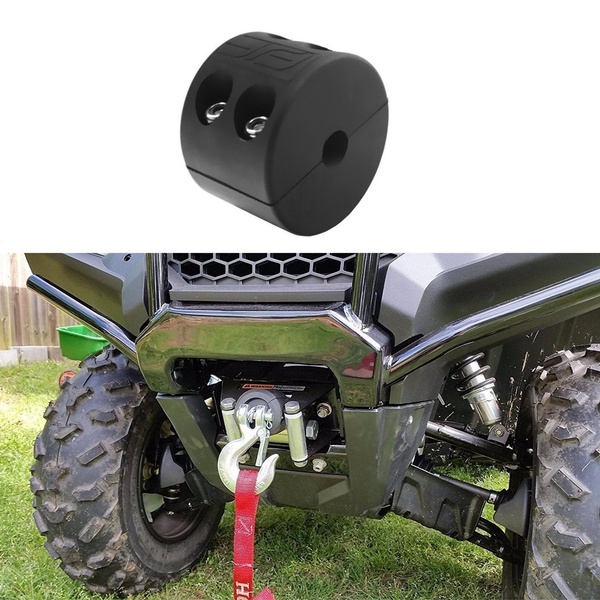 It is important to make sure that everything is securely fastened and works properly.
It is important to make sure that everything is securely fastened and works properly.
If you have any questions or would like further advice on purchasing, installing, operating and maintaining an ATV or ATV winch, please contact your nearest authorized CFMOTO dealer.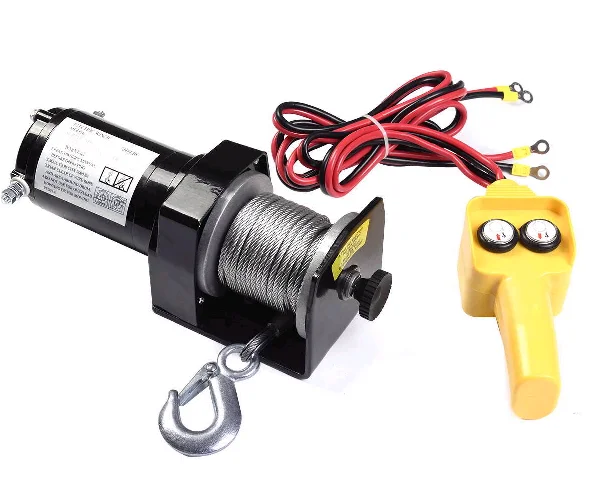
Dealers CFMOTO
Most ATVs have a winch in the front as standard. If there is no winch, you can buy it and install it yourself.
Below we will tell you how to use it correctly and how to choose it if you need to buy a new one.
The winch helps:
In principle, it is possible to do without a winch, but only if you are going to ride on dry and proven routes, and you definitely will not be tempted to go beyond them. In any other case - if you are not afraid of fords, mud, steep slopes, forests - a winch is a must.
Structurally, it is a drum on which a cable with a hook at the end is wound. On the sides of the drum are an electric drive and a gearbox to reduce the number of revolutions so that the drum spins slowly.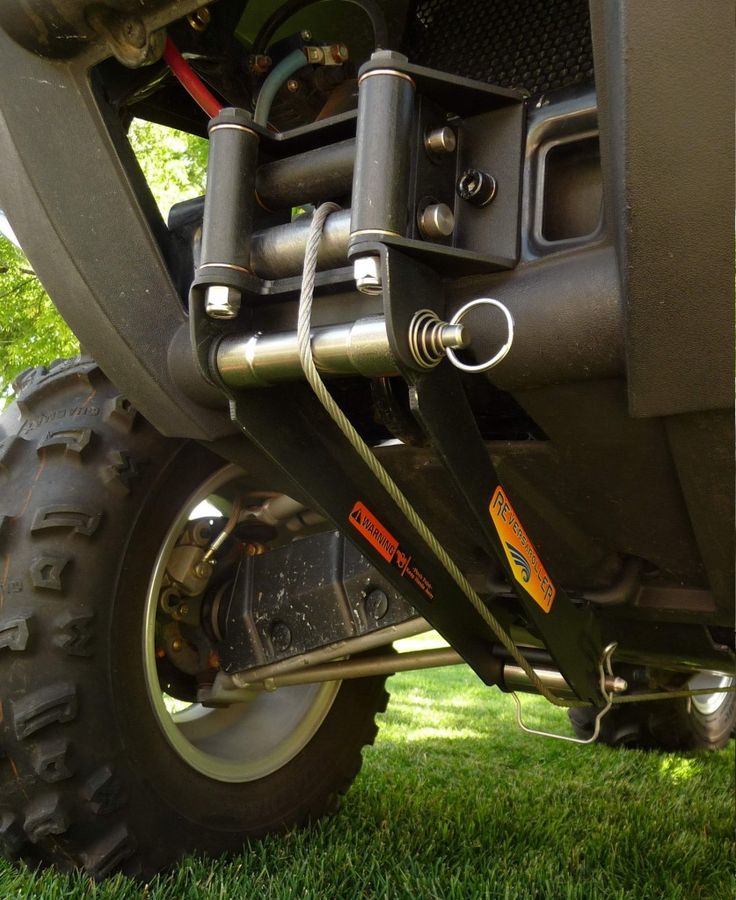 The drive is connected to the battery of the ATV itself, and is powered by it, even if the engine is turned off. Usually, on winches, the cable is unwound in two ways: either manually or by the same electric drive.
The drive is connected to the battery of the ATV itself, and is powered by it, even if the engine is turned off. Usually, on winches, the cable is unwound in two ways: either manually or by the same electric drive.
The whole structure is mounted on a special platform, which is usually located on the front bumper of the ATV.
Before buying a winch, check if your ATV has a prepared platform for mounting it - some models do not have it as standard. If not, you first need to buy and install a platform, and then attach the winch itself to it.
Select:
 And if they don’t write, you can call and clarify, or simply convert pounds to kilograms online.
And if they don’t write, you can call and clarify, or simply convert pounds to kilograms online.  Metal or synthetic. Metal is cheaper, but heavier, not elastic, it is more difficult to work with it (gloves are needed, you can get hurt), and if damaged, you cannot repair it. Synthetic (sometimes called Kevlar) is more expensive, it needs to be looked after, but it is easier to work with, it weighs less, and if the cable breaks, it can be tied in place.
Metal or synthetic. Metal is cheaper, but heavier, not elastic, it is more difficult to work with it (gloves are needed, you can get hurt), and if damaged, you cannot repair it. Synthetic (sometimes called Kevlar) is more expensive, it needs to be looked after, but it is easier to work with, it weighs less, and if the cable breaks, it can be tied in place.
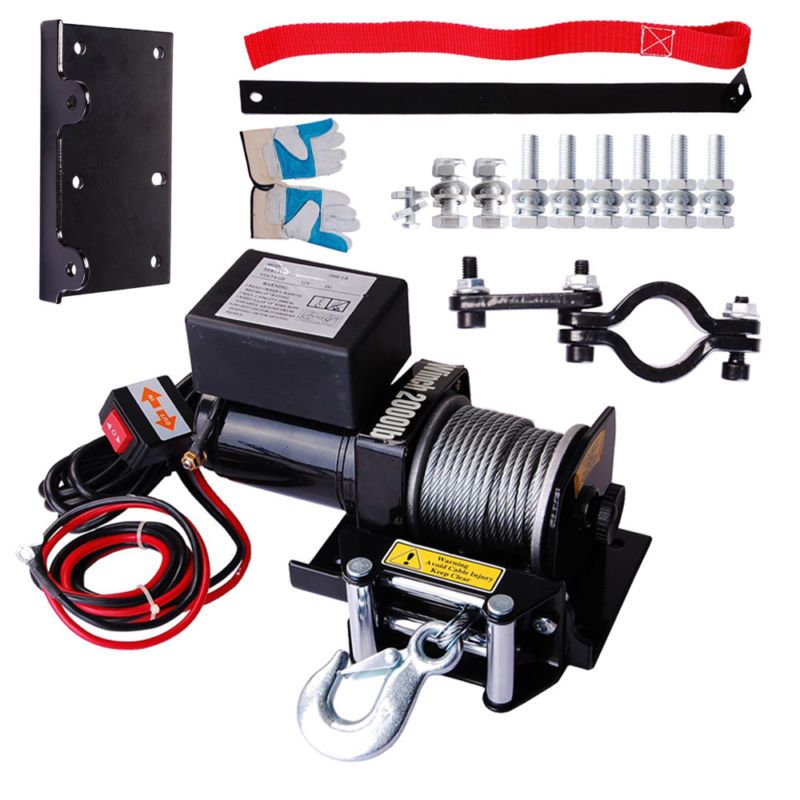 A cable, especially a metal one, can easily damage the skin.
A cable, especially a metal one, can easily damage the skin.
Did you check if you have a playground? Have you already chosen and bought a winch?
Now it needs to be installed:
If your ATV does not have a platform, you need to buy one (or make it from a metal plate) and attach it to the frame.